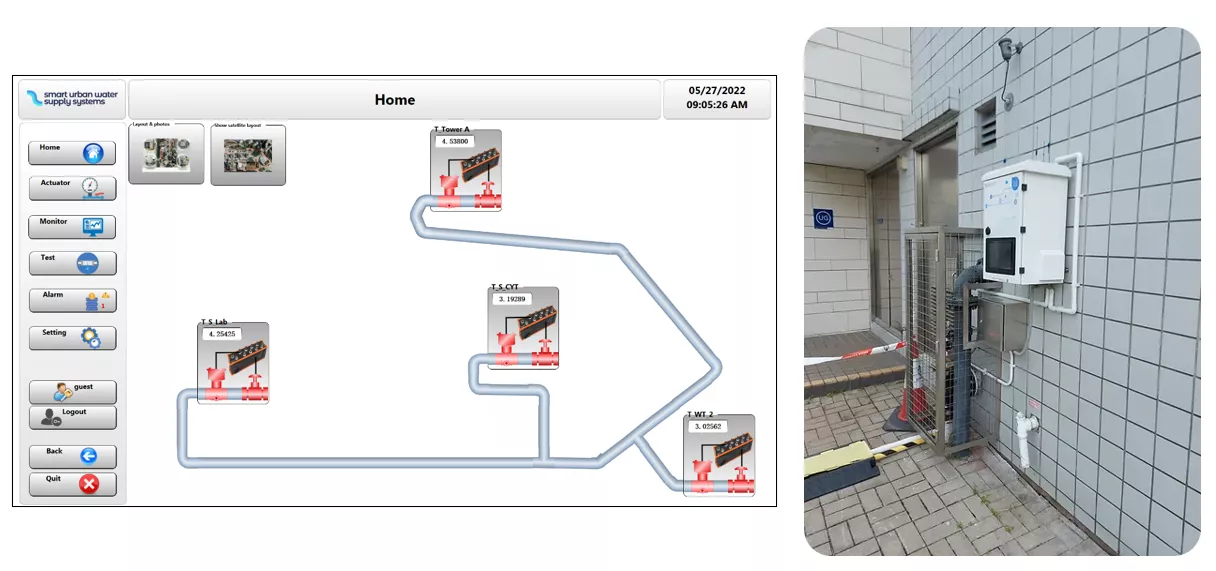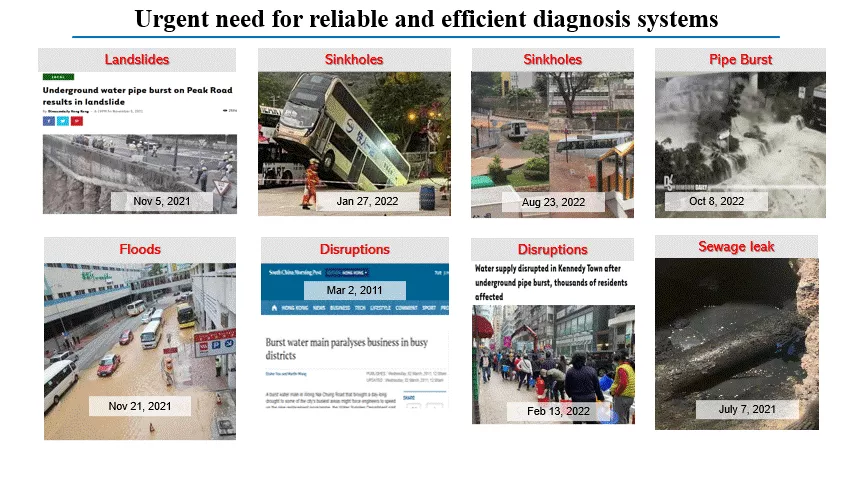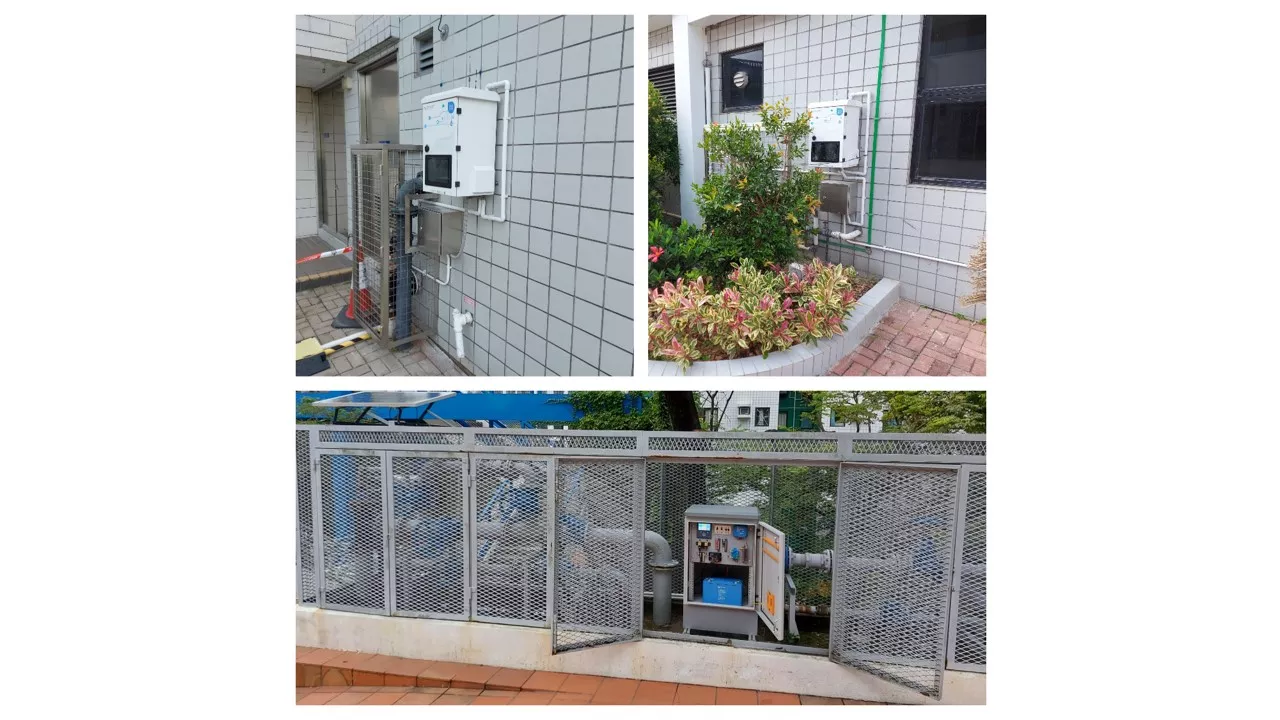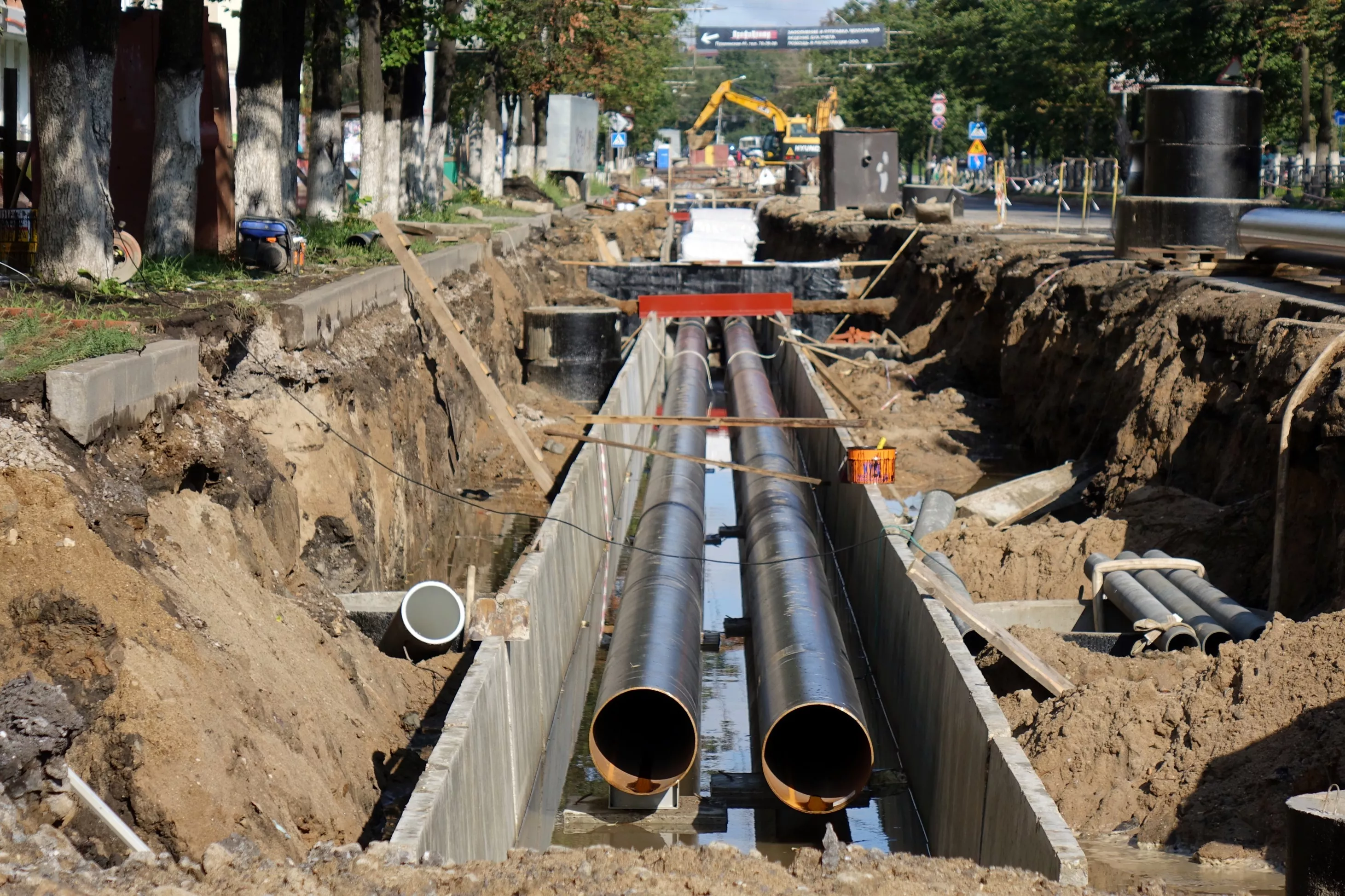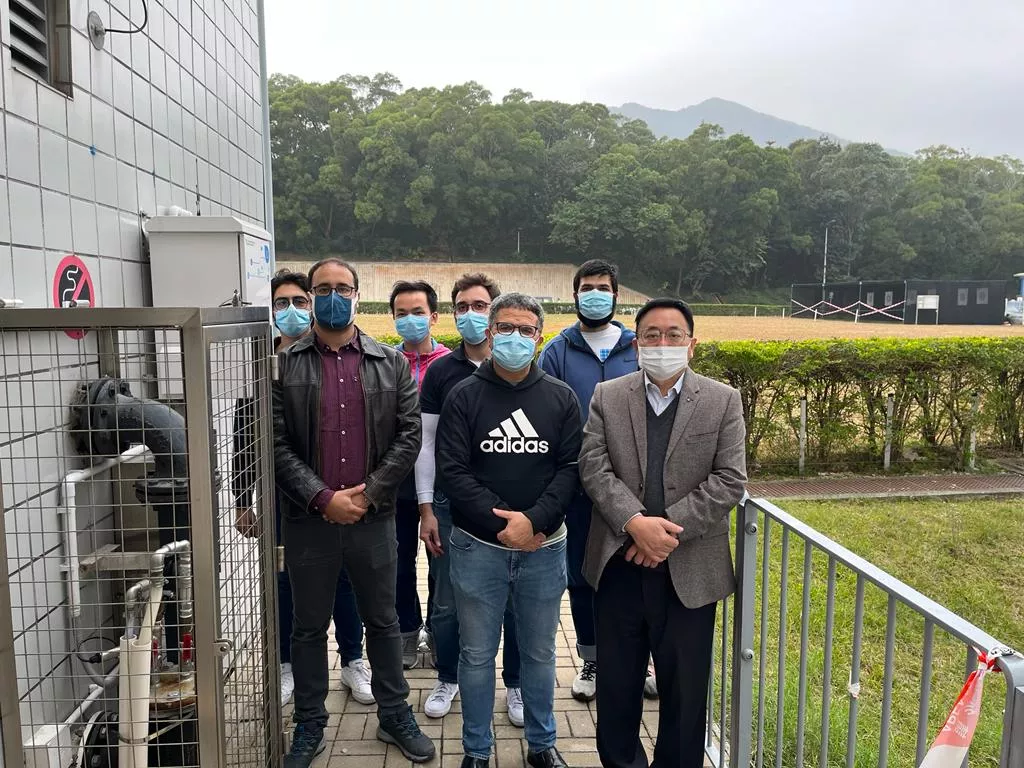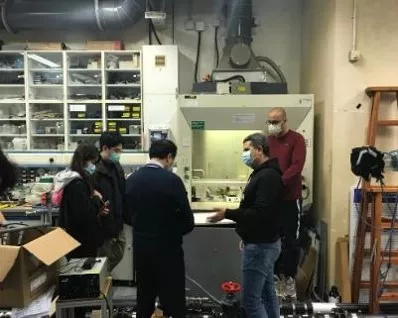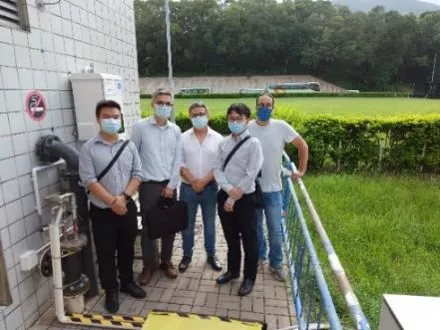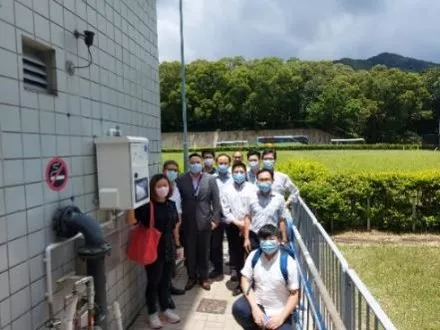Smart Water Network @ HKUST
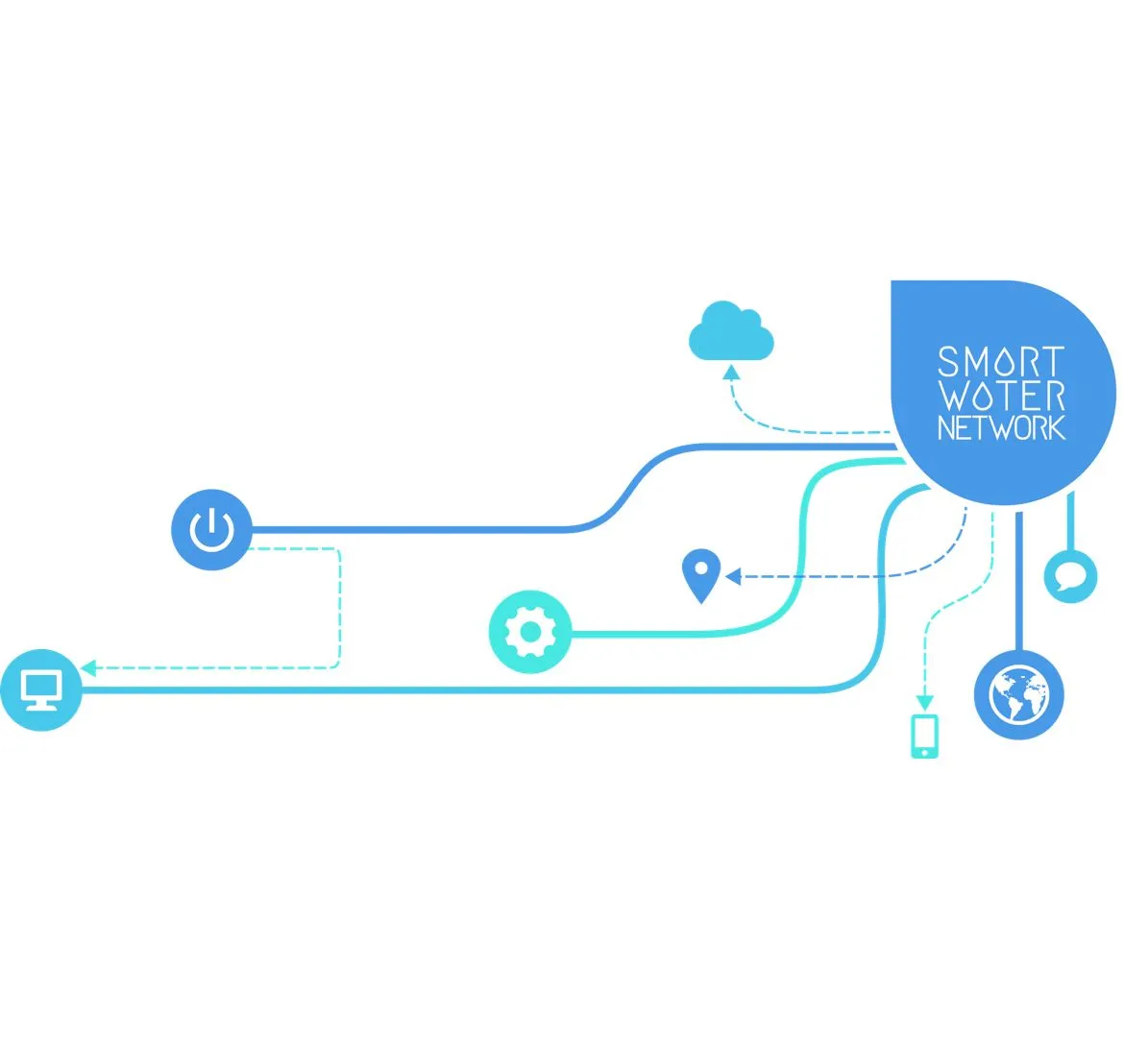
Smart Water Network @ HKUST
This project provides the first implementation of time reversal (TR)-based diagnostic method in a real urban water supply system (UWSS) and develops a remote and automated monitoring system to control it. The TR involves an experimental step where water-born waves propagating at high speed (km/s) are sensed, and a theoretical step where the chronological order of the sensed waves is reversed and reemitted into a model of the UWSS. The reversed signals focus their energy on scatter sources (e.g. leaks, blockages) in the UWSS with a resolution that improves with frequency and is proven to achieve the limit set by wave physics.
What is the problem this project is trying to address?
Urban Water Supply Systems (UWSS)—comprising a complex network of buried pipes—is vital for life and economic productivity. These networks are extensive (~8000 km in length in Hong Kong (HK) alone), largely inaccessible, aging, and fraught with physical defects and operational inefficiencies, resulting in unacceptable water and energy losses and hydraulic performance deficiencies. These systemic problems present a huge obstacle to making cities sustainable, adaptive and carbon neutral. In HK, 150M m3/year of water is lost amounting to 15% of the supply with a direct cost in excess of HK$800M/year. The water network has a huge carbon footprint and, in HK, is the third largest energy consumer. Worldwide, non-revenue water runs to 126B m3/year, enough to supply 130 HKs, with a direct cost of more than US$39B/year. Thus, methods to accurately and efficiently localize and characterize defects are vital to save water, energy, and pipeline infrastructure, and reduce water footprint.
How does this project support our sustainable smart campus as a living lab vision?
Information about the aging and weakening of the pipes will be shared with FMO on a regular basis, allowing the university to cut costs on repair and management. The technology will also be displayed to HKUST students and visitors educating them on the water loss and financial issues. The project will contribute to the vision of a living lab where students, professors and other departments can work together to explore the future of multi-sensor information fusion and new signal processing techniques. The project will also function as a laboratory exercise in some university courses.
What's next?
Some of the FYP and PG students involved in SSC smart water network will form a team to initiate a startup company engaged to developing the world’s first real-time fully automated and autonomous remote sensing technology based on time reversal (TR) of waves for the diagnosis and imaging of buried, dark and inaccessible water supply networks. The TR technology is reliable, low cost, long-range, non-intrusive and non-disruptive This innovative technology will support HK’s WIN vision, 2030 water-loss-reduction target, climate action plan 2030+, and 2050 net-zero target. It will also enhance HK’s position in developing water and environmental services into “pillar” industries.


